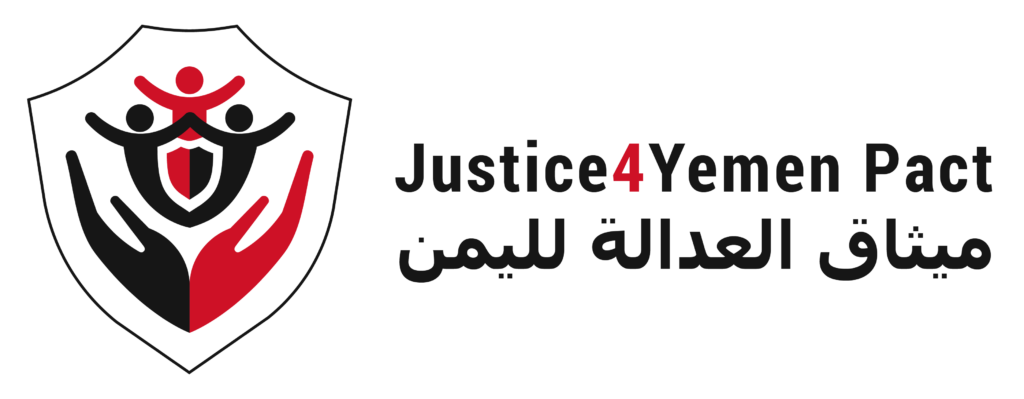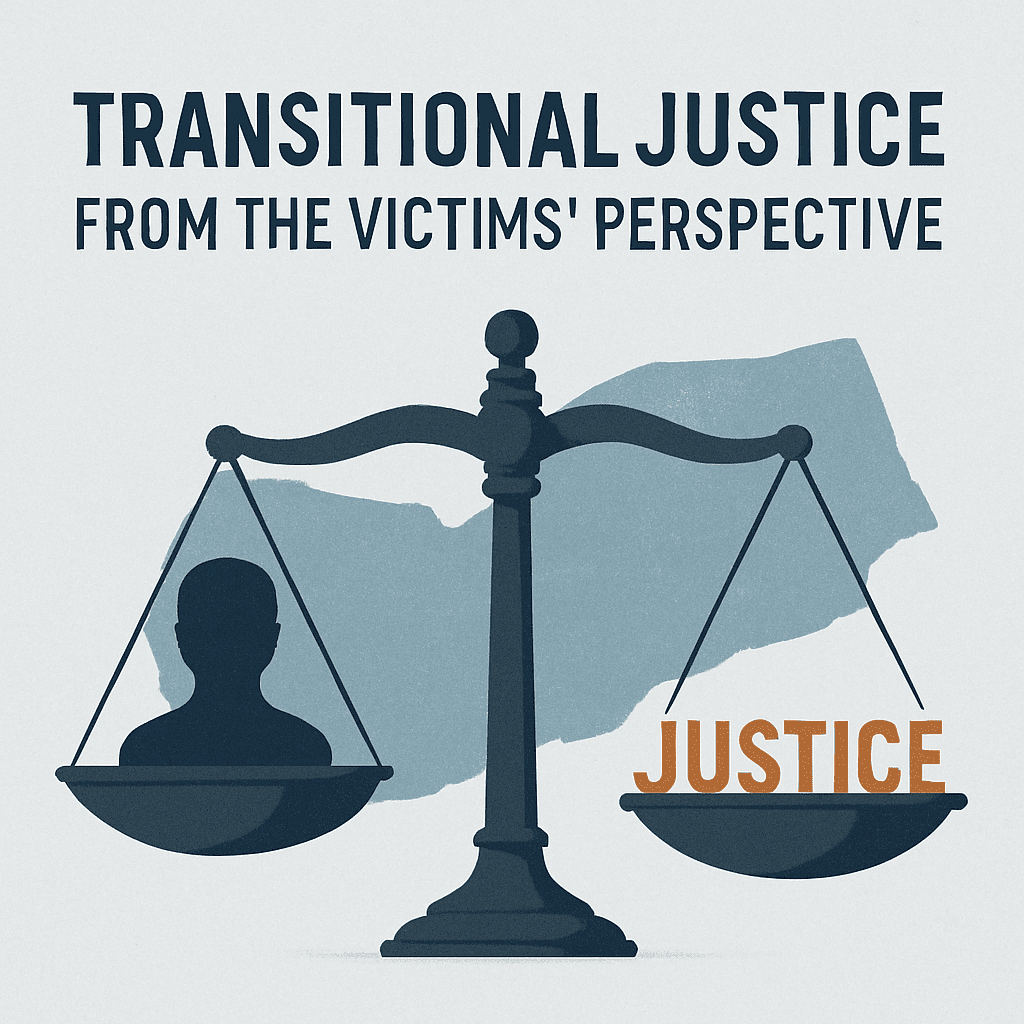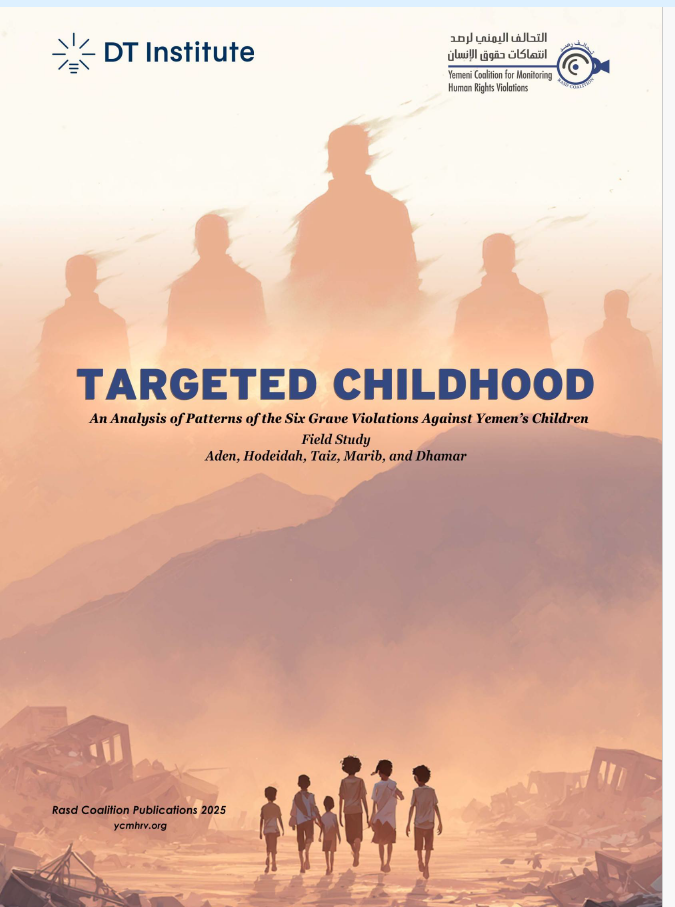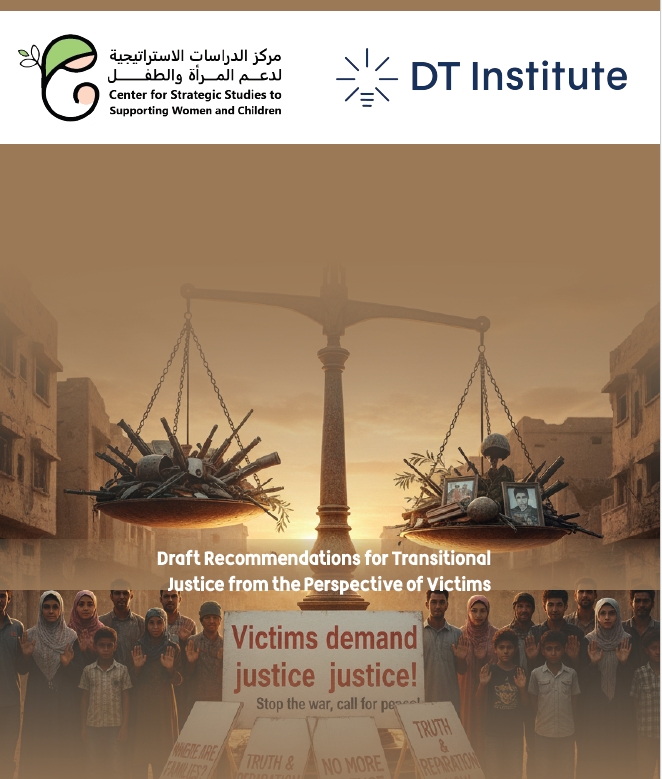In normal situations:
When dealing with someone who has taken your rights, assaulted you, or robbed you of your possessions, you turn directly to the law asking for justice. You will begin by pursuing the perpetrator through the judiciary system. There should be thorough procedures to achieve justice; there should be accountability.
In abnormal situations:
When the conflict is widespread – multiple parties and components within the government are ruling, victims are numerous, and conflict-based violations vary, such as killing, looting of property, arbitrary arrest, enforced disappearance, and others. Your rights are lost. You will not know who to bring a case against, either due to corruption or because the person who assaulted you has become influential in one of the government’s institutions. Additionally, a notable factor is that you are not the only oppressed person — the victims are many.
Usually, wide violations lead to oppression of the victims. Moreover, they may form a barrier of hatred, animosity, and a desire for revenge due to the lack of trust between the victims and survivors on one side and government institutions that have not provided them with justice on the other side. This impedes the prosperity of the state.
This type of injustice requires comprehensive treatment to provide justice for the victims and to ensure that violations are not repeated. This would be handled through well-considered steps that address past impacts and restore people’s trust in building the future.
This approach refers to transitional justice, where every pillar of justice is established for the victim. Among these is the pillar of accountability. Even if symbolic as part of the path to public reconciliation, accountability provides the victim with a sense of satisfaction and lays a foundation for trust between the people and government institutions by emphasizing the significance of legal frameworks. Moreover, even formal accountability deters violators and prevents those who may consider committing such acts in the future from doing so.
In this regard, it is essential to rely on the results of the field study titled “The Path Towards Peace” which was issued a few weeks ago by the Sam Organization for Rights and Liberties, Abductees’ Mothers Association, and Justice4Yemen Pact Coalition. This study aimed to monitor the local community’s vision regarding mechanisms for implementing transitional justice and national reconciliation to support peace in Yemen.
This study has initiated a debate about the most suitable option to achieve the desired reconciliation and begin a new era. It also reveals a significant gap between the victims’ perspective on transitional justice and the mechanisms that Yemenis outside the victims’ circle deem appropriate for achieving reconciliation. Here, we must revisit the study’s results to understand the new and old challenges.
The Victims’ Position
The study, conducted by Yemeni civil society organizations (CSOs), presented six primary reparations measures to 86 victims and individuals related to victims to determine their priorities in achieving transitional justice. Accountability of perpetrators ranked first at 53.5%, while reconciliation measures came in sixth (last) place at 7%, following options such as material compensation, psychological support and rehabilitation, medical treatment, and acknowledgment and apology from the perpetrator.
A significant and notable shift occurred that warrants attention to understand the reasons: When all participants, totaling 122 individuals (including the 86 victims or those related to them), were asked about transitional justice mechanisms suitable for Yemen’s situation, 82% of participants ranked firstly the formation of mechanisms for victims’ compensation, while 18% did not rank it as their first choice. Surprisingly, accountability of violators came in sixth and last place, following institutional reforms, initiatives and activities to support reconciliation, truth-seeking about violations, international oversight and assistance, and the creation of memorial monuments to honor victims.
When all participants were given two options; reconciliation and war-termination or accountability and justice, 64.3% of participants preferred the first option (reconciliation and war-termination), compared to 35.7% who favored accountability and justice.
Thus, a question arises: why did the victims first choose accountability of perpetrators, but then a huge gap emerged, with accountability dropping to the last place according to the preferences of all participants?
We cannot understand this without analyzing the numbers.
First: The study’s community
The study conducted 122 interviews, divided as follows: 109 interviews represented different segments of society:
35% were community actors and influential entities, including employees, members of CSOs and youth initiatives, community leaders, social figures, religious individuals, and neighborhood heads. Some of these individuals represented victims or were informed about violations.
- 25% were internally displaced persons (IDPs) and refugees.
- 22% were marginalized groups and minorities.
- 18% were victims and survivors.
Among these, more than half of the participants, 56 individuals, stated they had no knowledge of the concept of transitional justice, while 53 participants reported being familiar with the concept. The remaining 13 interviews were conducted with Yemeni experts from political parties, human rights activists, and one academic member.
Second: The study’s community understanding reveals a shift in preferences:
Victims and survivors of violations represent a small percentage of the study’s participants, and it is them who persistly call for accountability. If some of those who know the victims (among the 86 participants in the study) have changed their preferences, it does not mean that the victims themselves have abandoned the option of accountability. Rather, this percentage confirms a clear truth; actual victims are more attached to the accountability option. The gap widens between the victims’ perspective, especially the most affected ones, with those who experience violations from outside the circle of victims or far from its core.
Consider an example: a circle in which we place the victims of violations. At the center of the circle, we place the most affected victims, including dead and wounded individuals. Then, we distribute other victims according to the violation and degree of harm – arbitrary arrests, enforced disappearances, destroyed homes, unfair dismissal from jobs, marginalization, internal and external displacement (creating IDPs and refugees), and so on. In this way, we proceed until we reach the least severe violation, which is closest to the circle’s circumference.
This approximate example illustrates an important point; the level of thinking varies among victims themselves regarding options for achieving transitional justice. For instance, the families of the deceased persons would not accept a direct model for achieving reconciliation. Similarly, those who have lost limbs and know their perpetrators would find it difficult to accept reconciliation without accountability. In contrast, IDPs might accept compensation without uncovering the truth and holding those responsible for their displacement accountable.
This disparity within the circle of victims themselves reflects their choices. Thus, the subject of achieving reconciliation without holding violators/perpetrators accountable is an injustice to the rights of the most affected victims. It also places us in two dilemmas: either to stripping transitional justice of its meaning or the rule of law.
Emptying Transitional Justice of Its Meaning:
Could transitional justice be compromised if we proceed directly to reconciliation without holding perpetrators accountable? This question came to mind when I reviewed the study, “The Path Towards Peace in Yemen.”
Upon further examination, I found a notable response confirming that reconciliation without accountability or justice undermines the concept of transitional justice. Moreover, such a reconciliation law could grant violators immunity from judicial accountability.
Interestingly, this was mentioned in a legal comment by criminal justice specialist and lawyer, Khaled Al-Jamrah, in a 2012 article I wrote titled “Transitional Justice: The Cage That No One Has Entered Yet.” At that time, the exact content of my article was unclear, and I did not read the response by Al-Jamrah and the newspaper where his response was published, Al-Ahali Newspaper.
According to Al-Jamrah, who was a member of the Yemeni Center for Transitional Justice at the time, I made a mistake in assuming that the draft of transitional justice project included “judicial prosecution of those presumed responsible for violations committed in Yemen during the past period of governance, and that this is the reason for the current dispute between supporters and opponents of the project.” However, as he added, “upon reviewing the draft of the transitional justice law, one finds that the project completely excludes the element of judicial prosecution and retains the other elements of transitional justice including, 1) fact-finding, 2) institutional reform, 3) reparations (material compensation), and 4) reviving memory (moral compensation).”
Al-Jamrah emphasized that if the project was implemented in such form, where it lacks one of the most important international standards of transitional justice — judicial prosecution — it would “exempt all those responsible for past violations from any judicial prosecution. The project is closer to being a reconciliation law that forces citizens to waive their right to pursue violators judicially in exchange for material and moral compensation provided by the government through allocations granted by supporting countries and donors”.
Al-Jamrah, whose response I unfortunately read after 13 years, noted that the dispute over the draft transitional justice project in 2012 revolved around a committee for documenting and monitoring violations, followed by moral and material compensation to those affected, which the government would arrange and pay to victims and their families. He added that “even if these violations are documented, those violators will not be brought to justice, as the law project excludes this important international standard of transitional justice and replaces it with material and moral compensation. Thus, the project becomes akin to an immunity law.”
Conflict with the Essence of Law
In his important book, “Transitional Justice and Yemeni Reconciliation: Obstacles to Implementation and Foundations of Reconciliation in Yemen,” published in 2013, Dr. Hamid Al-Lahabi pointed to a set of obstacles to transitional justice, highlighting two main obstacles in the Yemeni case:
- Political consensus: The warring parties reached a settlement and power-sharing agreement, began normalizing the situation, and agreed on non-criminal reconciliatory justice, which does not achieve justice for victims.
- Immunity and lack of legal awareness: Dr. Al-Lahabi enriched the discussion on the immunity granted to former President Ali Abdullah Saleh and his aides, according to paragraph 3 of the basic principles of the Gulf Initiative, which states: “On the twenty-ninth day from the beginning of the agreement, the Council of Representatives, including the opposition members, shall approve laws granting the president, and those who worked with him during his term, immunity from legal and judicial prosecution.” Paragraph 5 stipulates: “All parties commit to stopping all forms of revenge, pursuit, and prosecution through guarantees and commitments provided for this purpose.”
Indeed, the Immunity Law No. 1 of 2012 was issued, with Article 1 stating: “Mr. Ali Abdullah Saleh, President of the Republic, is granted full immunity from legal and judicial prosecution.” Article 2 stipulates: “Criminal prosecution immunity shall apply to officials who worked with the president in civilian, military, and security government institutions regarding actions taken for political motives during the performance of their official duties, and this does not apply to acts of terrorism.”
According to Al-Lahabi, this immunity law reveals a lack of legal awareness. It confirms that the violations occurred, rather than invalidating them, and affirms the involvement of the former president. Hence, his request for immunity. He referred to Article 539 of the Penal Procedure Law, which permits the issuance of a general amnesty by law in cases where:
- There is a criminal act prescribed and punishable by law.
- The criminal act was committed by a person or several individuals.
- Strong circumstances prompted the perpetrator to commit the criminal act, such as cases of war and natural disasters.
Article 539 of the Penal Procedure Law states: “General Amnesty is issued by law, it erases the criminal nature of the act. As a result, no criminal proceedings may be initiated.If proceedings have already begun, they should be discontinued. And, if a conviction has been issued, it is considered null and void. As for the Special Amnesty, it shall be granted by a decree of the President of the Republic.” The same paragraph of the Article specifies, “Neither type of amnesty shall affect the rights of others without their consent.”
In a large argument, Al-Lahabi demonstrates that reconciliation without accountability mechanisms conflicts with the essence of humanitarian law. It also contradicts with Article 51 of the Yemeni Constitution, which stipulates: “Every citizen has the right to resort to the judiciary system to protect their legitimate rights and interests.”
Notably, Article 51 of the Yemeni Constitution was used by members of the General People’s Congress Party (GPC) as one of the justifications for rejecting the transitional justice project in 2012. The truth is that transitional justice aligns with the core of this constitutional article and reinforces it. Accountability measures, even formal measures under transitional justice, are judicially characterized and are a crucial step in restoring trust between citizens and government institutions.
To conclude, in order to overcome the obstacles to transitional justice, we need to agree on an accountability mechanism. This would allow parties to move past the fear of prosecuting violators, provide justice for victims, and enable Yemenis to reap the benefits of transitional justice by declaring reconciliation.
Written by:
Mr. Sulaiman Al-Humaidi
*This article was produced as part of DT Institute’s SPARK project, implemented by the Sam Organization for Rights and Liberties and the Abductees’ Mothers Association, with the support of the DT Institute.





